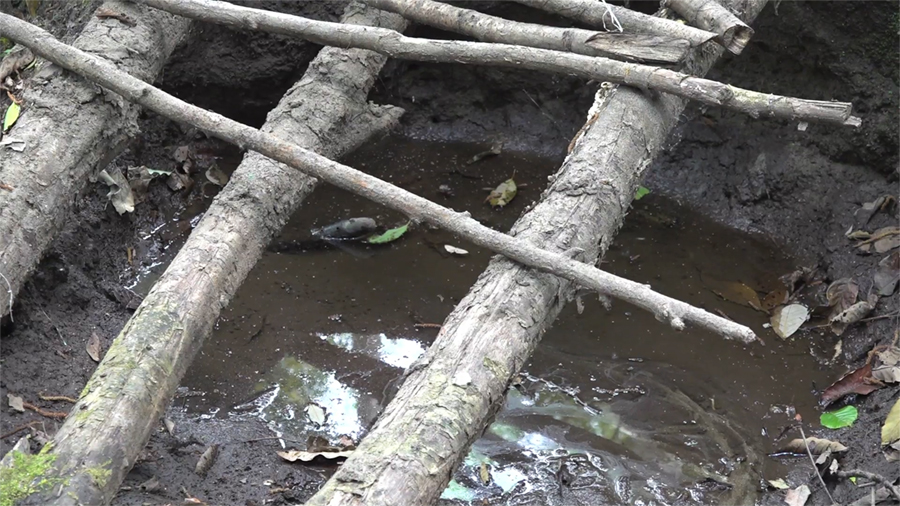
In Punakha, the drinking water shortage problem facing the residents of Talo Gewog is worsening every year. People have been depending on spring water in the nearby vales for consumption, but their water sources are now gradually drying up resulting in an acute shortage of drinking water. They are requesting relevant authorities to provide them with a reliable drinking water supply.
The Bemi-Lum spring water, one of the sources used to be closer to the gewog centre road. But today, with the spring water gradually drying up, the source has shifted over 200 meters above the road.
The spring water is the source of drinking water for almost ten households in the village. Most of the households store the water in empty containers and tanks.
“The spring water is gradually drying up as a result the water source keeps shifting. The water is becoming insufficient for us. Many of us are consuming the muddy water by filtering. Most of the people depend on such water sources for drinking purposes and very soon this water source might dry up,” said Dorji Zangmo, a resident of Nubgang.
“Earlier, we used to drink water from the source at Nyenda-Lum which was sufficient for us. But now, even that spring water has dried up. I don’t know how it dried up. Since we have a water shortage problem, I close the water taps when we don’t need water so that the others get enough water. Similarly, it will be helpful if others close their water taps when we have religious ceremonies at home,” said Tsetshem, a resident of Ghangthramo-Labtsakha-Sewdrangsa.
“We have a small water tank above our village and we fetch water from there. But it is sufficient only to cook our daily meals. We cannot use that to sprinkle in our kitchen garden or feed our cattle. In fact, for cattle, we normally fetch water from the Phendey Irrigation channel,” said Holem, another resident of Ghangthramo-Labtsakha-Sewdrangsa.
“We are facing an acute water shortage problem while conducting Kuchhey-Bumdey at the temple. On top of that, we conduct Nyung-Ney during the seventh month of the Bhutanese calendar. We face water shortages while conducting such rituals. We have to source water from other places. There is nothing that we can do, as there is no water from the source itself,” said Yeshi, Labtsakha Lhakhang Lam, Talo Gewog.
“There is no way we can talk about maintaining health and hygiene when there is no water at home. There are times when we have to go to sleep without washing our hands and feet after working in the fields,” said Thuji, a resident of Ghangthramo-Labtsakha-Sewdrangsa.
The drinking water scarcity problem is not limited to the residents of Talo Gewog. Households in Guma Gewog face similar issues.
The Gups of the two gewogs raised the issue in the recent Dzongkhag Tshogdu. The two gewogs share borders. Currently, in the absence of sufficient drinking water, residents also resort to harvesting rainwater in summer.
According to an engineer of the regional engineering cluster of Khuruthang, to address the water shortage, a survey was conducted last year to supply water from the Leko-Tsangm stream in Toepisa Gewog. The district has submitted the survey findings to the Ministry of Infrastructure and Transport.
In the Dzongkhag Tshogdue, Kabji-Talo Constituency’s Member of Parliament, Minister of Industry, Commerce and Employment, Namgyal Dorji asked the Dzongkhag Tshogdu to submit a detailed proposal to the ministry soon.
“A new proposal is required from the district at the earliest to be submitted to the ministry reflecting the entire detailed reports of the Leko-Tsangm water project including its cost estimation. So, I will follow up accordingly. We will have to do it immediately.”
The shortage of drinking water is causing misunderstandings among the communities.
“The water shortage problem is also triggering arguments among the residents. We get into heated arguments when others divert our water supply to their areas,” said Dorji Zangmo, a resident of Nubgang Chiwog.
“The pipe from the Tago-Lum source is just an inch. We are sharing that water among around eighty households. So, people are continuously complaining that the water is insufficient for them,” said Sonam Wangchuk, a water supply caretaker.
“Our Member of Parliament pledged to address our drinking water shortage and that is the only expectation of ours,” said Rinzin Wangchuk, Talo Gup.
Until the work to supply water from the new source at Leko Tsangm is completed, residents of the two gewogs will have to continue struggling with the shortage.
Once complete, the Leko Tsangm water supply project is expected to benefit around 4,500 people of more than 650 households in the two gewogs.
Changa Dorji, Punakha
Edited by Phub Gyem








